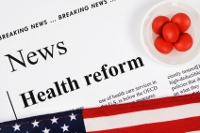
Program Overview
Rooted in the Civil Rights Movement and the War on Poverty, the community health center program has become a key component of the healthcare safety net. From two federally funded clinics established in the 1960s, it has expanded to 1,400 organizations overseen by the Health Resources and Services Administration’s (HRSA) Bureau of Primary Health Care. With most operating multiple sites, health centers collectively serve more than 32.5 million people—nearly one in ten Americans—each year.
Statutory Authority and Service Area Requirements
Community health centers operate under Section 330 of the Public Health Service Act, which specifies that they must be nonprofit or public entities that provide comprehensive primary care, regardless of a patient’s ability to pay. To qualify for federal funding, health centers must:
- Offer services on a sliding fee scale based on income
- Serve medically underserved populations (MUPs) or patients in medically underserved areas (MUAs)
- Maintain a governing board where at least 51% of members are patients, ensuring community representation
Each health center defines its catchment area in its federal funding application and must assess the unmet healthcare needs of its population. This may include determining the ratio of primary care providers to residents, analyzing key health indicators such as infant mortality rates, and identifying economic barriers to care, including the percentage of residents living below the federal poverty level. These assessments and the catchment area’s demographics help health centers identify service gaps and develop programs that align with community needs.
Required Services
Health centers must provide a broad range of primary health services as specified in Section 330(b)(1) of the Public Health Service Act. In addition to core medical services—such as family medicine, internal medicine, pediatrics, obstetrics, and gynecology—health centers are also required to offer:
- Pediatric vision, hearing, and dental screenings
- Preventive dental care
- Voluntary family planning services.
Special Population Programs
HRSA provides targeted grant funding for health centers serving specific populations, including:
- Migrant and seasonal agricultural workers and their families
- Individuals experiencing homelessness
- Residents of public housing.
Health centers that receive funding to serve homeless populations must also provide substance use disorder treatment as part of their services.
Federally Qualified Health Centers (FQHCs) and Look-Alikes
A Federally Qualified Health Center (FQHC) is a community-based provider that meets federal operational requirements and receives HRSA Section 330 grant funding. In addition to grant support, FQHCs qualify for enhanced reimbursement rates from Medicare and Medicaid under 42 U.S.C. § 1395x(aa) and 42 U.S.C. § 1396d(l).
A look-alike health center meets all FQHC requirements but does not receive Section 330 grant funding. However, look-alikes still qualify for enhanced Medicare and Medicaid reimbursement.
Federal Tort Claims Act (FTCA) Coverage
FQHCs are eligible for malpractice liability protection under the Federally Supported Health Centers Assistance Acts of 1992 and 1995 (FSHCAA). This program “deems” health center employees, officers, and certain contractors as Public Health Service (PHS) employees, making them eligible for Federal Tort Claims Act (FTCA) coverage.
FTCA applies to medical, surgical, dental, and other covered services, provided they are within the approved scope of the health center’s operations. It eliminates the need for costly private malpractice insurance, allowing health centers to redirect resources toward patient care.
Participation in the National Health Service Corps (NHSC)
FQHCs are eligible to participate in the National Health Service Corps (NHSC), a federal program that provides loan repayment assistance and scholarships to healthcare providers who commit to working in underserved areas. NHSC participation helps health centers recruit clinicians, addressing workforce shortages in primary care, dental care, and mental health services.
340B Drug Pricing Program Participation
Most FQHCs participate in the 340B Drug Pricing Program, which allows eligible providers to purchase outpatient medications at significantly reduced prices. This program helps health centers expand access to affordable prescriptions for low-income and uninsured patients. Savings from 340B can be reinvested into patient services, such as expanding pharmacy operations or covering medication costs for those who cannot afford them.
Uniform Data System (UDS) Reporting
All FQHCs and look-alike health centers must submit annual Uniform Data System (UDS) reports to HRSA. These reports track key performance metrics, including:
- Patient demographics (e.g., income levels, insurance status)
- Clinical outcomes (e.g., diabetes and hypertension control rates)
- Utilization data (e.g., number of visits and services provided)
- Financial performance
UDS data helps HRSA evaluate the effectiveness of the health center program and informs policy decisions at the federal level.
Conclusion
Community health centers play a critical role in providing accessible, high-quality primary care in underserved areas. Through federal funding, enhanced reimbursement rates, workforce support programs, and participation in initiatives like 340B, these centers continue to expand healthcare access while addressing social and economic barriers to care.
